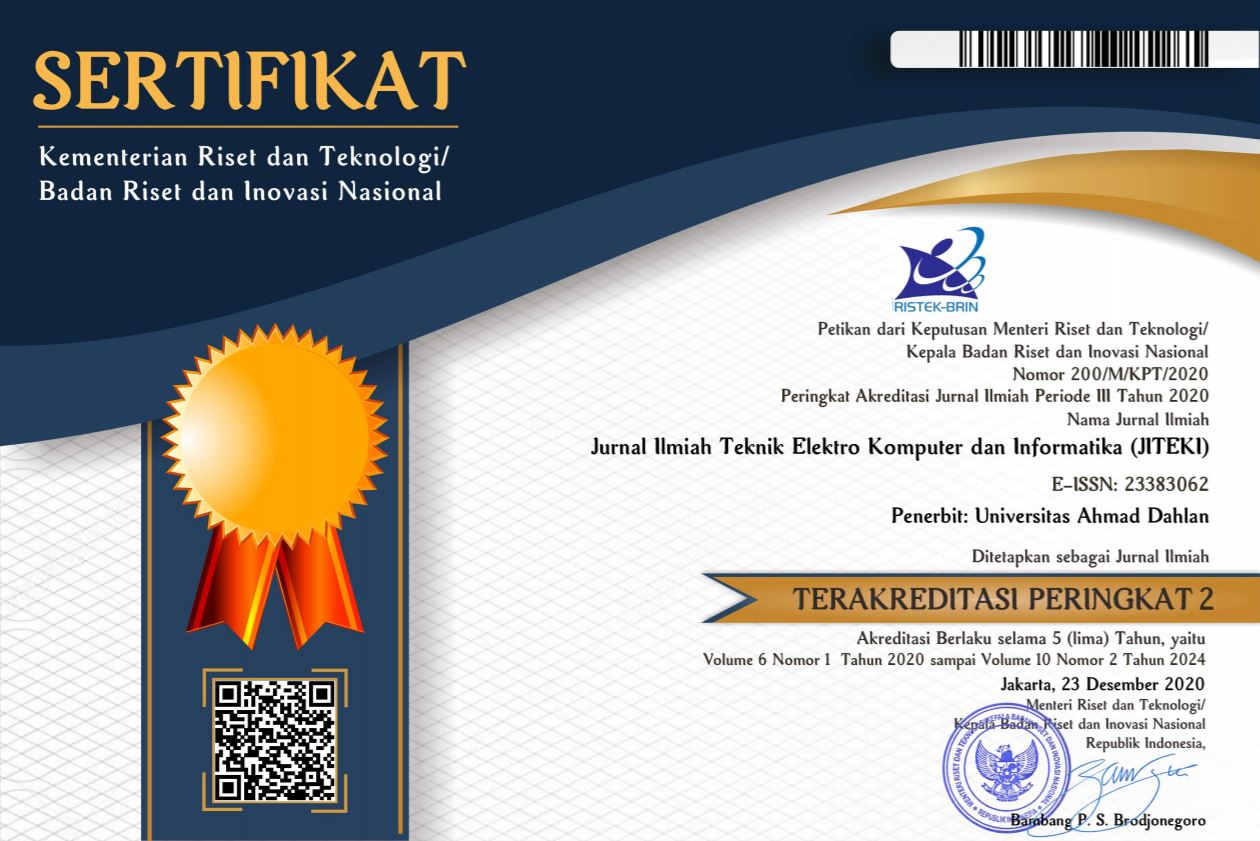Sentiment Analysis and Topic Modelling of The COVID-19 Vaccine in Indonesia on Twitter Social Media Using Word Embedding
Abstract
This study aims to analyze the sentiments of the Indonesian people towards the COVID-19 vaccine on Twitter. Data collection was carried out from September 2020 to June 2021 with the keyword "covid vaccine," which resulted in 262306 tweets. After filtering and cleaning, there are 83384 tweets left. The labeling process was done manually by an expert. The label composition in the data is 35209 tweets of positive sentiment, 41596 tweets of neutral sentiment, and 6579 tweets of negative sentiment. The remaining data is preprocessed using case folding, removing punctuation, stopword removal, stemming, and the application of slang words. The highest number of tweets appeared in January 2021, after Joko Widodo became the first person in Indonesia to receive a vaccine injection. The number of tweets reached 23492 tweets. At the topic modeling stage, measurements were conducted using the Coherence Score. The distribution of the optimal number of topics is 3 topics. The first topic, with a token percentage value of 51.8%, leads to positive sentiment, while the second and third topics, with token percentage values of 24.5% and 23.7%, lead to neutral sentiment. Bidirectional LSTM architecture was implemented to perform sentiment classification. Fasttext and GloVe word embedding was tested to vectorize tweet data. The test accuracy generated by Fasttext word embedding reached 75,7690%, while the test accuracy produced with GloVe word embedding reached 74.7017%. The usage of slang words could not increase the test accuracy in this study. The use of the Modelcheckpoint to monitor model performance during training could produce a model with a slightly higher test accuracy, about 1.07% (in scenario 1 and scenario 6), compared to a model whose performance was monitored using Early Stopping. In future research, it can be tried to apply a lower learning rate to produce better accuracy in a large number of epochs, or it could be by changing the dropout parameter.
Keywords
Sentiment Analysis;Topic Modeling;Word Embedding;Fasttext;GloVe;Latent Dirichlet Allocation
Full Text:
PDFDOI: http://dx.doi.org/10.26555/jiteki.v8i1.23009
Refbacks
- » —
Copyright (c) 2022 Kartikasari Kusuma Agustiningsih, Ema Utami, Omar Muhamammad Altoumi Alsyaibani

This work is licensed under a Creative Commons Attribution-ShareAlike 4.0 International License.
| About the Journal | Journal Policies | Author | Information |
Jurnal Ilmiah Teknik Elektro Komputer dan Informatika
ISSN 2338-3070 (print) | 2338-3062 (online)
Organized by Electrical Engineering Department - Universitas Ahmad Dahlan
Published by Universitas Ahmad Dahlan
Website: http://journal.uad.ac.id/index.php/jiteki
Email 1: jiteki@ee.uad.ac.id
Organized by Electrical Engineering Department - Universitas Ahmad Dahlan
Published by Universitas Ahmad Dahlan
Website: http://journal.uad.ac.id/index.php/jiteki
Email 1: jiteki@ee.uad.ac.id
Email 2: alfianmaarif@ee.uad.ac.id
Office Address: Kantor Program Studi Teknik Elektro, Lantai 6 Sayap Barat, Kampus 4 UAD, Jl. Ringroad Selatan, Tamanan, Kec. Banguntapan, Bantul, Daerah Istimewa Yogyakarta 55191, Indonesia



